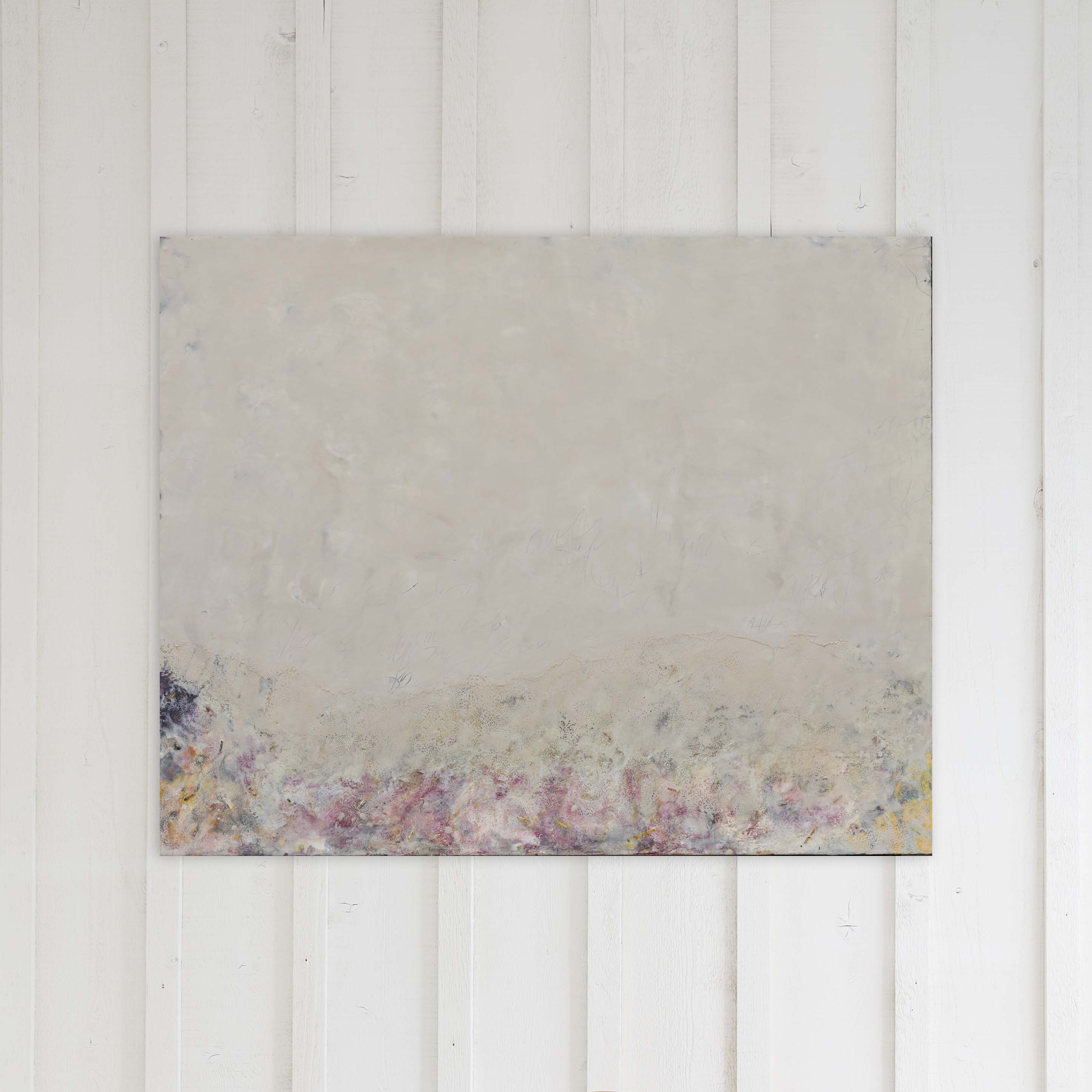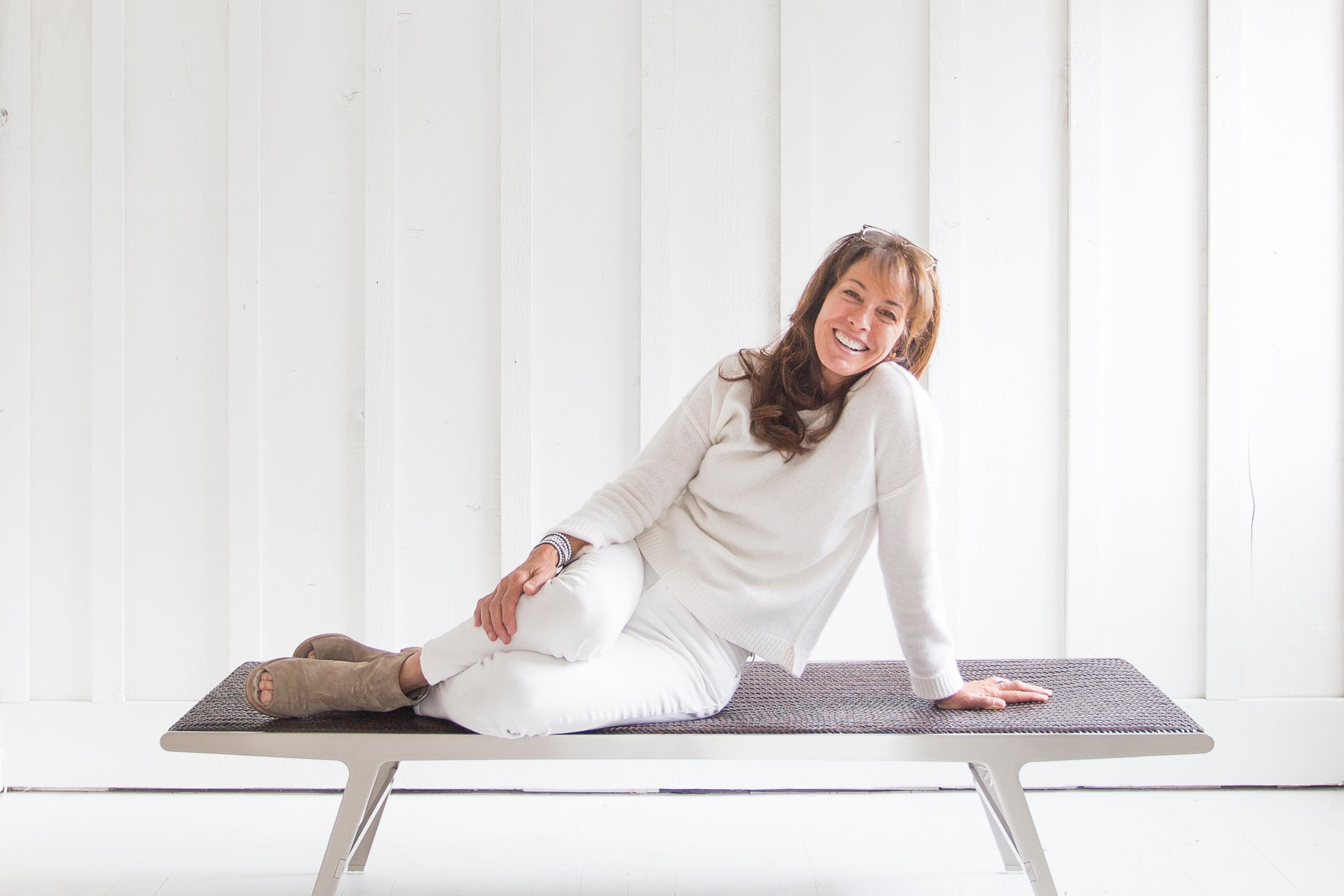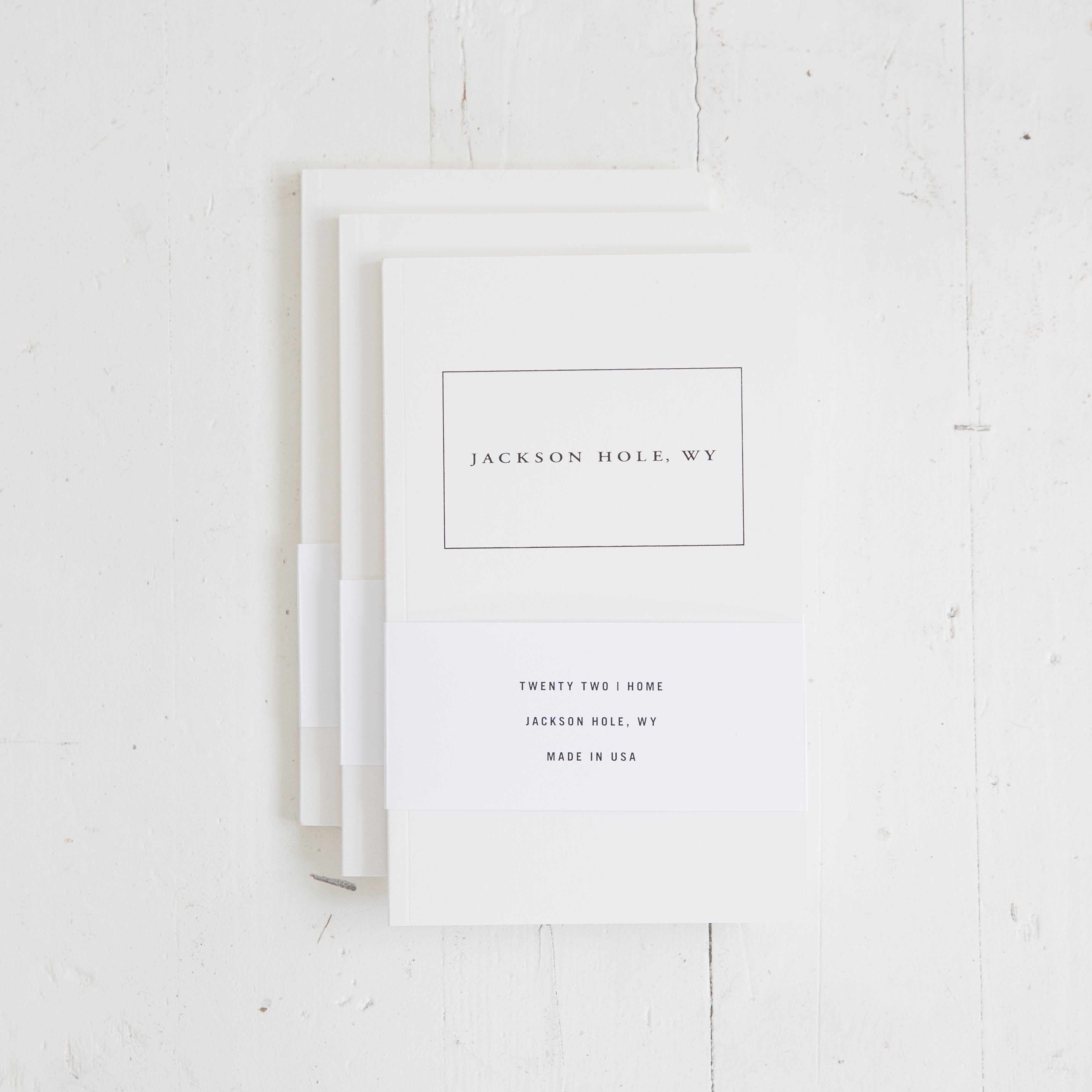
Artist Profile: Pamela Gibson
Pamela Gibson approaches her creative process as a crucible: A rapid melt of choices and challenges, a churning mix of materials and metaphors. From this cauldron, encaustic paintings emerge—complex yet calm, her struggle manifested as serenity. This haptic harmony lends grace and gravitas to the interiors in which we place her work, as well the interior of our showroom where two paintings currently reside, awaiting their forever homes.
Echoing the ethos of Twenty Two Home, Pamela draws on her adopted community, Jackson Hole, sowing inspiration from the ecosystem surrounding her valley house. From her studio window, she monitors her favorite stand of cottonwoods and the neighboring swan pond. She charts the light and its sharp angles. In this fluctuating context, she observes and orders the shapes she sees. She responds, whole-heartedly, to the landscape.
But with her brush, she obliterates the object of her affection—the land, though not its layers. Starting with realism, she pushes herself to abstraction. She starts with the landscape, working from snapshots she takes as notes: A canyon en route to Park City, an embankment in the desert. Ruminating on such scenes, she draws out distinctive shapes, sketching contours in oil pastels directly on the board. Then she begins building a palette in wax, a conversation of colors unique to each painting. Some encaustic artists limit themselves to a handful of hues. Not Pamela: she is too enamored with color theory. Ever direct, she dabs pure pigment on the corner of the painting itself, experimenting in situ.
She struggles: to let go of origin; to let the work become about the paint, not the place; to forget the natural features and focus on the surface. Oftentimes, adored elements must be subsumed. Attachment can distract from what the composition needs. Periodically, she lights her paintings on fire, a spectacle of shellac. When the finish feels nigh, introspection settles on the studio. She writes and reads, exploring the depth of the metaphor beneath the painting. Recording her stream of consciousness yields a parade of potent words. She settles on a metaphor, and lets it define her final decisions. The composition coalesces lyrically as she maps her last marks, references burned and buried into the thick palimpsest. She steps back and declares the painting done.
In working and finished form, her art frames the complexity of her relationship to nature: Growing up in Sparks, NV instilled a love for open space, though she spent much of her adulthood ensconced in the city, raising a family in Portland, OR. At age 42, she earned a bachelor’s degree from Oregon College of Art and Craft and began an ambitious tapestry practice. With her boys grown, she and her husband began traveling widely, logging long stints in France. Their Teton move happened quickly: A vacation turned into purchasing a forever home. For Pamela, the first three years felt rootless. She missed the city, the pace. Disconnected, she dove in, volunteering on nonprofit boards, meeting local artists. Slowly, she began to settle into place and her creative instincts shifted in response. The saturated sun of Oregon lent itself to the flat richness of tapestry. Not so in Wyoming: the incandescent light called for different treatment. One morning, she decided to sell her loom, a mighty machine that filled her entire garage studio. Textiles no longer fit. In Wyoming, she would paint.
Her process draws parallels to other disciplines: Like an archeologist, she excavates treasures buried beneath subsequent layers of paint. Like an editor, she distills the noise into its essence, sometimes ruthlessly removing beloved passages. Like a dancer, she feels her way through the layers, each movement instinctual yet careful. Like a scientist, she conducts experiments, boldly layering colors right onto the board itself. Like a ceramicist, she works the surface with her hand tools, sculpting edges. Like a designer, she accounts for the complexity of life, offering space for resolution.



